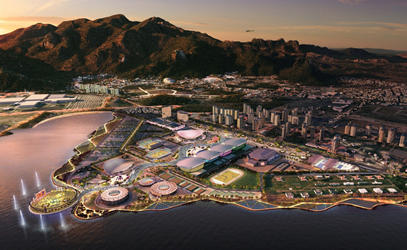Updating the Strategic Transportation Plan for the Olympic and Paralympics Games in Rio de Janeiro, 2016
Review and update the Strategic Transportation Plan to be submitted to the IOC (International Olympic Committee)’s review and approval, also considering the requirements of the Paralympics Strategic Plan which includes the adoption of certain accessibility facilitating actions regarding public transportation.

ACTIVITIES DEVELOPED
- Inventory of new projects and changes to the transportation system
- Analysis of the location of sports and non-sports Olympic facilities
- Analysis of the Olympic torch route
- Redesigning the Olympic fleet
- Review and redesign of points of support to the Olympic fleet
- Physical, functional and operational characteristics of the new systems
- Selecting strategies to reduce demand (rotations, work shift rescheduling, traffic blocks, loading and unloading restrictions)
- Setting up transportation model databases by project coding in the simulation network and scenario building
- Updating the 2010 social-economic scenarios
- Projecting variables for 2016, and distributing traffic zones (BRTs + game-typical zones)
- Developing travel matrices
- Traffic simulations, considering BRTs, BRS and Metro Line 4
- Identifying efficiency gains in journey duration, costs, impacts on traffic, passenger gains, integration capability, accessibility, increase in mobility, and population safety factor
- Proposal of preferred and alternative routes for public transportation
- Operational plan for the different systems with strategies for game days
CASE STUDIES
- Accessibility Study for the Maracanã Stadium Complex – RJ
- Belo Horizonte’s Mobility Operational Plan for FIFA Confederations Cup 2013 and FIFA World Cup Brazil 2014
- Transportation and Logistics Strategic Plan for the Panamerican and Parapanamerican Games 2011 in Guadalajara, Mexico
- Updating the Strategic Transportation Plan for the Olympic and Paralympics Games in Rio de Janeiro, 2016
- Study of Crowd Flows into the Maracanã Stadium – RJ
- Study of Crowd Flows into the Beira Rio Stadium in Porto Alegre – RS







